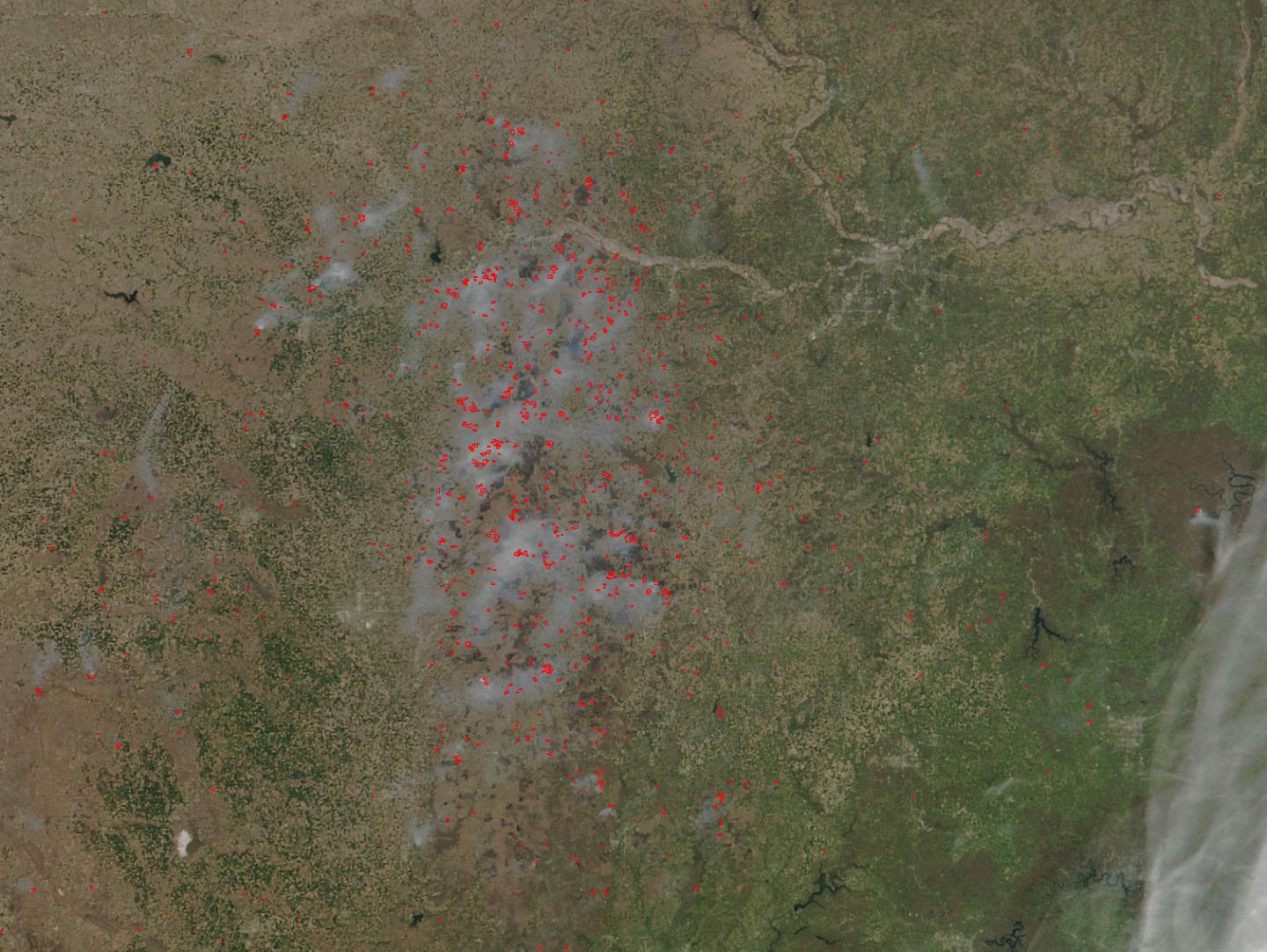
Credit: NASA image courtesy Jeff Schmaltz LANCE/EOSDIS MODIS Rapid Response Team, GSFC. Caption by Lynn Jenner
Most if not all the fires in this image taken by Suomi NPP satellite's VIIRS (Visible Infrared Imaging Radiometer Suite) instrument on April 11, 2017 are controlled fires set by farmers to manage land. Farmers in Kansas as allowed to burn grass every year to produce better grass for cattle. The grass burning typically occurs between March and mid-April on a yearly basis. The issue is with air quality. Air quality alerts are currently in place in Kansas and also in Nebraska as the smoke from the fire drifts in that direction. The smoke released by any type of fire (forest, brush, crop, structure, tires, waste or wood burning) is a mixture of particles and chemicals produced by incomplete burning of carbon-containing materials. All smoke contains carbon monoxide, carbon dioxide and particulate matter (PM or soot). Smoke can contain many different chemicals, including aldehydes, acid gases, sulfur dioxide, nitrogen oxides, polycyclic aromatic hydrocarbons (PAHs), benzene, toluene, styrene, metals and dioxins. The type and amount of particles and chemicals in smoke varies depending on what is burning, how much oxygen is available, and the burn temperature.
###
NASA image courtesy Jeff Schmaltz LANCE/EOSDIS MODIS Rapid Response Team, GSFC. Caption by Lynn Jenner
Media Contact
Rob Gutro
[email protected]
@NASAGoddard
http://www.nasa.gov/goddard
############
Story Source: Materials provided by Scienmag





